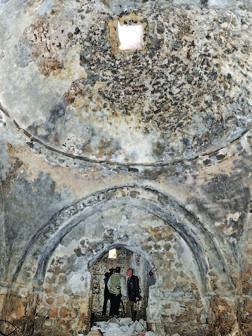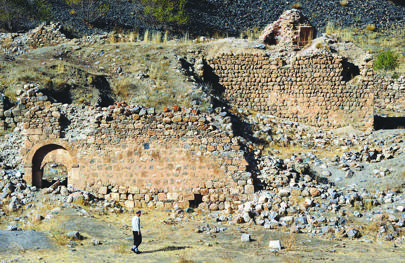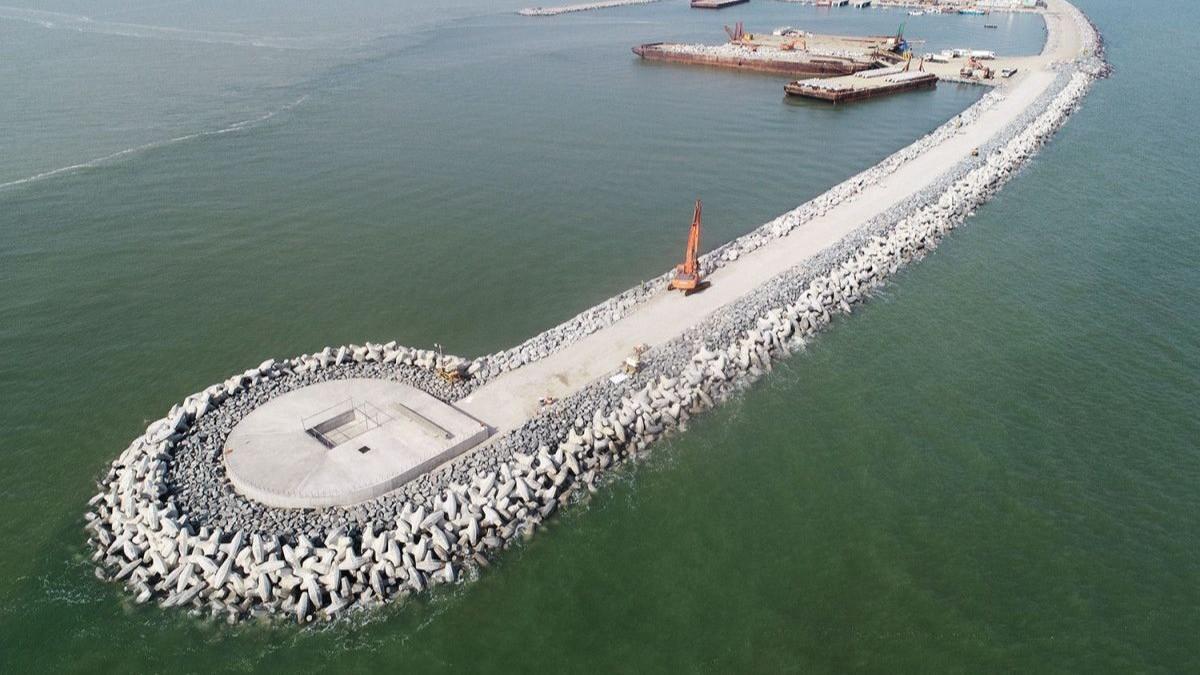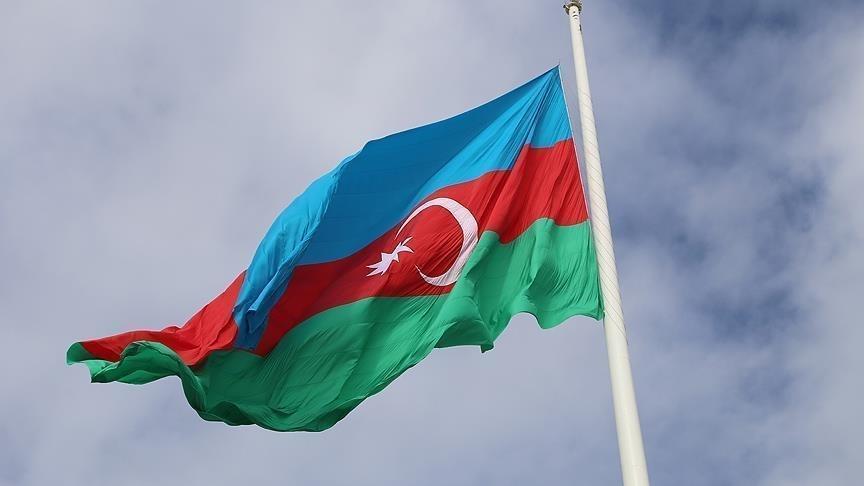Remote Van monastery awaits visitors
VAN - Anadolu Agency

The Hodeacvank Monastery, which can be reached after a four-hour walk from the village of Bilgi, known as the Der Meryem Church by locals, is now trying to find its way as a new tourism spot. AA photo
The historic Hogeacvank Monastery, which was built in the 8th century with 22 rooms, can only be reached after a four hour journey on foot. The monastery is located in the Çatak district of the southeastern province of Van, which also draws attention for its many other religious structures.The structures, which have long been banned to visitors for safety reasons caused by terror events in the region, were opened to visitors after the peace process was initiated.
The Hodeacvank Monastery, which can be reached after a four-hour walk from the village of Bilgi, is 130 kilometers from Van and known as the Der Meryem Church by locals, is now trying to find its way as a new tourism spot.
 The monastery was targeted by treasure hunters in the past, and although most of it has decayed because of neglect, it still dazzles for its architectural magnificence.
The monastery was targeted by treasure hunters in the past, and although most of it has decayed because of neglect, it still dazzles for its architectural magnificence. Although the exact date of its establishment is unknown, the monastery is assumed to have been built in the 8th century and covers an area of some 2,000 square meters. A gate in the southern part provides entry.
Van’s Yüzüncü Yıl University member Associate Professor Yalçın Karaca said the monastery complex includes the Vierge Marie Church, a chapel, and 22 rooms.
“The formal historian of the 9th century Kingdom of Vaspurakan, Thomas Ardzruni, talks about the high priest of this church. Considering this information, it is possible to date the establishment of the monastery to before the 9th century. But it was not built in a heavily populated place, which is why it is not very well known by Armenians and locals,” Karaca said.
He added that the monastery had been active for many years, as an icon of the Virgin Mary was kept there until the 19th century, and many people around the world had visited the monastery to see this icon.
Noting that books had been written in the monastery between 14th and 16th centuries, Karaca said Armenian historians have suggested that four manuscripts, which are important for Christians, were written there.
“It is now abandoned. We should know that such places could gain from tourism. The Van Lake basin is very rich in terms of Islamic and Christian faith and architecture. The monastery served as the episcopacy center of the Akdamar Church as of 1651,” he said.
 Considered holy by Muslims
Considered holy by Muslims The professor also said the monastery, which is frequently visited by locals and considered holy, had oblations on its outer walls. “This shows us that the people of the region gave importance to Jesus Christ andthe Virgin Mary. Some people made wishes in the monastery to have a child. When their wish come true, they name their children “Meryem” [Mary] or İsa [Jesus],” Karaca said.
Local villager Abdullah Berge, 60, said a person living in his village had worked as a servant for the monastery for six years and provided them information about the monastery.
Berge said the monastery was two-stories high when he was young but a big part of it collapsed in the last 40 to 50 years because of neglect. “Many people from Van, Diyarbakır, Batman and Bitlis have come here to have a child,” he added.
Another villager, 51-year-old Faysal Yağmur, who came to the monastery from the village of Alaçayır, said they noticed the monastery by chance when passing from the valley when he was young.
“The monastery was strong then. We passed through six or seven doors into it but we were scared because it was dark, so returned. It is now desolate. I am really sorry about its situation. My sister, who failed to have a child, prayed here and she had a son. His name is İsa,” Yağmur said.
















